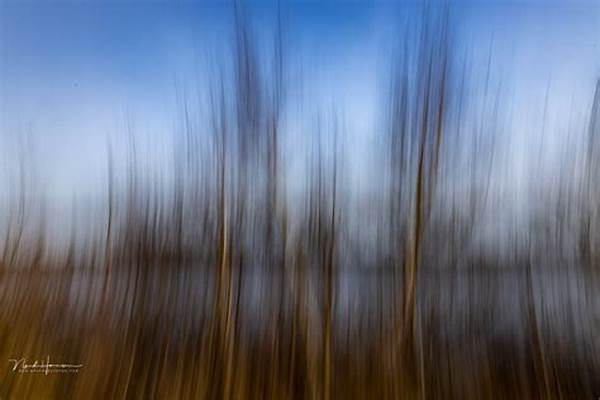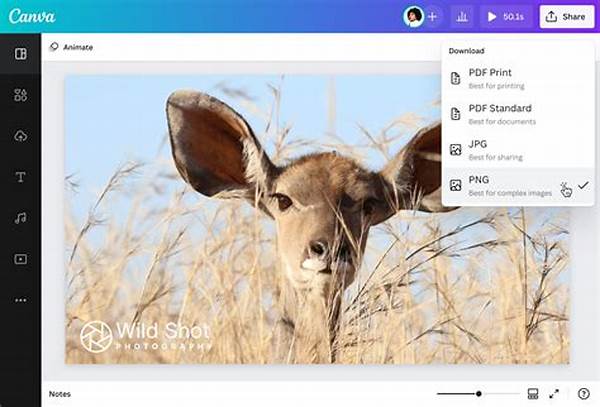Hey there, fellow wildlife photography enthusiasts! If you’ve ever ventured into the wild with your camera, you know the thrill of capturing those fleeting moments with animals in their natural habitats. But let’s be honest, motion blur can often rain on our parade. Let’s dive into some tips and tricks for reducing motion blur in wildlife photos so your snaps are as sharp as a hawk’s gaze.
Read Now : Framing Subjects For Impact
Understanding Shutter Speed
When it comes to reducing motion blur in wildlife photos, shutter speed is the name of the game. Imagine capturing a swift bird in flight or a gazelle on the run; these moments require a quick trigger finger and the right settings. By increasing your camera’s shutter speed, you freeze motion, which results in sharper images. A good rule of thumb is to match your shutter speed to the animal’s movements. For instance, if you’re photographing a bird, consider starting with a shutter speed of at least 1/1000th of a second. However, remember that faster shutter speeds mean less light hitting your sensor, so you might need to compensate with a higher ISO or a wider aperture. It’s all about finding that sweet, sweet balance.
Equipment Tips for Sharper Shots
1. Stabilize with a Tripod: Using a tripod can drastically aid in reducing motion blur in wildlife photos by keeping your camera steady.
2. Invest in a Good Lens: A lens with optical stabilization can work wonders when reducing motion blur in wildlife photos.
3. Use Burst Mode: Capture multiple shots in quick succession; it’s like playing the odds to get the sharpest snap!
4. Remote Shutter Release: Reduce those tiny shakes by using a remote release when taking those crucial wildlife shots.
5. Pre-focus on Your Subject: Anticipate where the action will be, and pre-focus to save precious time and sharpness.
Read Now : Reliable Techniques For Image Encryption
Lighting and Its Role
Lighting plays a significant role in reducing motion blur in wildlife photos. Good lighting means you can use faster shutter speeds without worrying about images turning out too dark. Early mornings and late afternoons are prime times not only for great lighting but also for active animal behavior. Experimenting with different times of the day can yield surprising results. In trickier lighting conditions, consider using a higher ISO to allow more light onto the sensor. Just keep an eye on the noise levels. Nature can be unpredictable; thus, having the right gear and knowledge prepares you to capture incredible shots regardless of lighting conditions.
Practicing Patience
Reducing motion blur in wildlife photos isn’t just about technical settings and equipment—it’s about patience. Wildlife photography often involves long hours of waiting and observing, waiting for the perfect moment. Patience allows you to be ready for that split second when everything aligns beautifully—great light, the right moment, and the animal in just the right pose or action.
Photography Techniques and Tricks
Wildlife photography is an art, and reducing motion blur in wildlife photos is a crucial part of mastering that art. It’s essential first to practice camera settings adjustments in a controlled environment. Whether snapping squirrels in your backyard or birds at a local park, experimenting with different settings helps in honing your skills when you’re out in the wild. It’s also therapeutic and rewarding when you capture that perfect shot under challenging conditions without blur!
Final Thoughts
Perfecting the art of reducing motion blur in wildlife photos takes dedication. Approach each outing not just as a trip to take pictures but as a learning experience. Commit to understanding your equipment. Take the time to observe animal behavior. Familiarize yourself with the environment and lighting conditions. Each small victory, like capturing a crisp, blur-free photo, is a testament to your skills and patience. With persistence, you’ll have a portfolio of stunning wildlife photos that tell the story of nature’s wonder without the unwanted blur. Keep shooting, keep learning, and enjoy every moment behind the lens!



